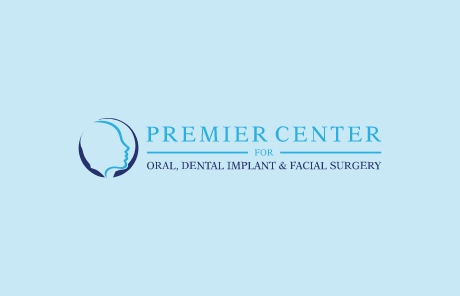Understanding the makeup of the materials that comprise dental implants goes beyond the technical aspects; it helps patients make informed and confident decisions about their oral health. At Premier Center for Oral, Dental Implant & Facial Surgery, our surgeons offer dental implants as the gold standard for replacing lost teeth.
Before and aFTERS
Beautiful Patient Results

The Three Main Components of Dental Implants
A dental implant is designed with three key components.
- Implant Post: Surgically implanted into the jaw, this part acts as the root for the new tooth.
- Abutment: Connects the implant post to the restoration.
- Restoration (Crown): The visible part of the implant, designed for chewing and smiling. This restoration is a porcelain crown for dental implants that replace a single tooth in most cases, but implant-supported bridges and implant-supported dentures are also used to replace multiple missing teeth.
Materials Used
The choice of materials for a dental implant is critical for its success, durability, and integration with the body:
- The Implant Post and Abutment are typically made from titanium, a durable and body-safe material. Titanium is unique because it fuses to the jawbone and thereby allows dental implants to become a permanent part of the smile.
- The Restoration is generally made of porcelain to match the look of natural teeth. Porcelain-coated metal may be used for additional strength in some cases.
Ensuring Longevity and Compatibility
Dental implants are known not just for their functionality but also for their longevity. Here’s why the materials ensure the implants last:
- Biocompatibility: Both titanium and zirconia are biocompatible, meaning the body accepts them and does not have an adverse reaction to them. This compatibility is essential for the success and longevity of the implant.
- Durability: The strength of titanium and zirconia ensures that dental implants can withstand the daily pressures of chewing and speaking for many years.
- Osseointegration: This is the process where the implant fuses with the jawbone. When added to bone tissue, titanium undergoes a process where it fuses with the jawbone. Osseointegration lets the titanium dental implant become a permanent part of your mouth and provides a stable foundation for the new tooth.
The Aesthetic Appeal of Porcelain Restorations
Porcelain, used for the crown or restoration part of the implant, is not just chosen for its strength. Its aesthetic appeal is significant:
- Natural Appearance: Porcelain closely resembles the color and texture of natural teeth.
- Stain Resistance: Unlike other materials, porcelain is resistant to staining, helping maintain a bright, natural-looking smile.
- Functionality: With these restorations, you can bite and chew all the foods you love as you usually could.
Learn More About Dental Implants
The materials used in dental implants, mainly titanium for the implant post and abutment and porcelain for the restoration, are essential for their effectiveness. These materials give dental implants their strength, functionality, and the ability to blend with natural teeth. At Premier Center for Oral, Dental Implant & Facial Surgery, we are dedicated to offering dental implants that improve your smile and overall oral health. Learn more about the significant benefits of dental implants and see how they can be an integral part of achieving a healthier and more confident smile.





